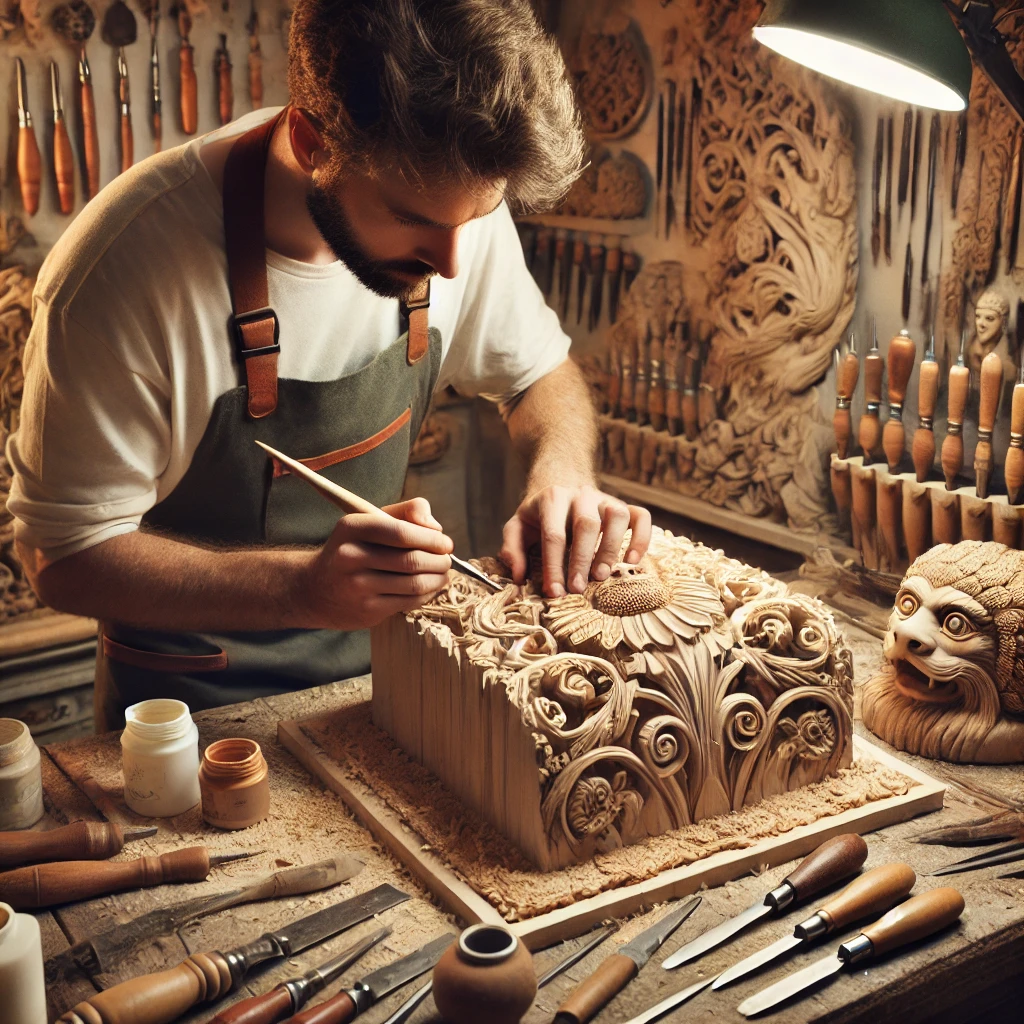Transform Your Mindset: Wood Carving for Wellness and Creative Mastery
Unlock the Therapeutic Benefits of Wood Carving with These Expert Tips and Techniques
Are you looking for a creative and mindful hobby that not only enhances your artistic skills but also boosts your mental well-being? Wood carving might be the perfect craft for you! This timeless art form combines creativity with craftsmanship, offering a rewarding escape from daily stress. Whether you’re just starting or an experienced carver, mastering wood carving techniques can provide you with a sense of accomplishment and a therapeutic outlet for self-expression. In this comprehensive guide, we’ll explore the best wood carving tools, techniques, and types of wood to get you started on your journey. By the end of this post, you’ll have all the knowledge you need to dive into this fascinating craft and begin creating beautiful, intricate designs. Ready to start your wood carving adventure? Let’s get carving!
Wood carving is a beautiful, ancient art form that allows you to shape wood into stunning creations. Whether you are a beginner looking for simple carving techniques or an expert interested in mastering advanced techniques, wood carving offers endless possibilities. Engaging in this craft brings both therapeutic benefits and an opportunity for creative expression. In this guide, you’ll learn essential tips, tools, and techniques to help you start or enhance your wood carving journey.
Wood carving is a timeless craft that blends creativity with craftsmanship. Whether you’re a beginner or an expert, mastering the art of wood carving can provide a deep sense of accomplishment and a mindful escape from the pressures of daily life. This guide covers essential wood carving techniques and tips to help you create beautiful, intricate designs, all while enhancing your well-being.
Types of Wood
Selecting the right wood is crucial to successful carving. Different types of wood have varying properties, which can impact the difficulty and beauty of your projects. Here are some of the most common woods used in carving:
- Basswood: Soft, easy to carve, fine grain. Ideal for beginners.
- Butternut: Soft, easy to carve, attractive color.
- Oak: Hard, durable, pronounced grain. Great for detailed work.
- Walnut: Medium hard, rich color, fine grain. Perfect for more experienced carvers.
For beginners, softwoods like basswood are the best choice. As you gain experience, you can explore harder woods like oak and walnut to create more intricate pieces.
Essential Wood Carving Tools
Having the right tools is key to successful wood carving. Here’s a list of basic and advanced tools every wood carver needs:
Basic Tools:
- Carving Knives: Used for detailed work and shaping.
- Gouges: Ideal for creating curves and hollows.
- Chisels: Essential for cutting and shaping wood.
- V-tools: Perfect for fine lines and intricate details.
- Mallet: Used to apply extra force to chisels.
Advanced Tools:
- Power Carvers: Electric tools for faster, detailed carving.
- Micro Chisels: Small chisels for fine details.
- Detail Knives: Specialized knives for intricate patterns.
- Woodburning Tools: For adding texture and shading.
Fundamental Carving Techniques
Mastering basic techniques is crucial for every beginner. These techniques will provide a solid foundation for your carving journey:
- Whittling: Involves carving with a knife. Ideal for small, simple projects.
- Relief Carving: Creates a raised design on a flat background.
- Chip Carving: Uses small knives to remove tiny chips, great for intricate patterns.
- Carving in the Round: Produces three-dimensional sculptures.

Safety Measures
Wood carving can be rewarding but should always be done safely. Follow these essential safety tips:
- Wear Protective Gear: Use safety goggles, a dust mask, cut-resistant gloves, and ear protection (if using power tools).
- Carve Away from Your Body: Always carve away from yourself to prevent accidents.
- Secure Your Workpiece: Use clamps or a vise to hold your wood firmly in place.
Design and Pattern
Selecting the right design is crucial for a successful carving project. Here are some tips to guide your design process:
- Consider Skill Level: Choose simple designs if you’re a beginner.
- Think About Wood Type: Some woods are better suited for intricate designs.
- Draw Inspiration from Nature: Organic shapes work well for wood carving.
Transferring patterns onto wood is the next important step. You can use tracing paper, carbon paper, or directly draw your designs onto the wood.
Finishing Touches
After carving, you’ll need to smooth and finish your piece:
- Sanding: Use different grits of sandpaper to smooth the surface.
- Applying Finish: Choose oil, wax, or lacquer based on the desired look and feel of your piece.
Common Mistakes and How to Avoid Them
Even experienced carvers make mistakes. Common issues include splinters and errors in carving. To avoid these:
- Keep Tools Sharp: Dull tools can cause slips and splinters.
- Carve with the Grain: Cutting against the grain leads to splintering.
- Sand the Wood: Proper sanding can smooth rough spots and remove splinters.
Conclusion
Wood carving is not just about creating beautiful pieces of art—it’s a therapeutic and mindful practice that brings joy and satisfaction. With the right tools, techniques, and safety practices, you can embark on a fulfilling carving journey. Whether you’re looking for a relaxing hobby or a creative outlet, wood carving offers endless opportunities to enhance your well-being.

